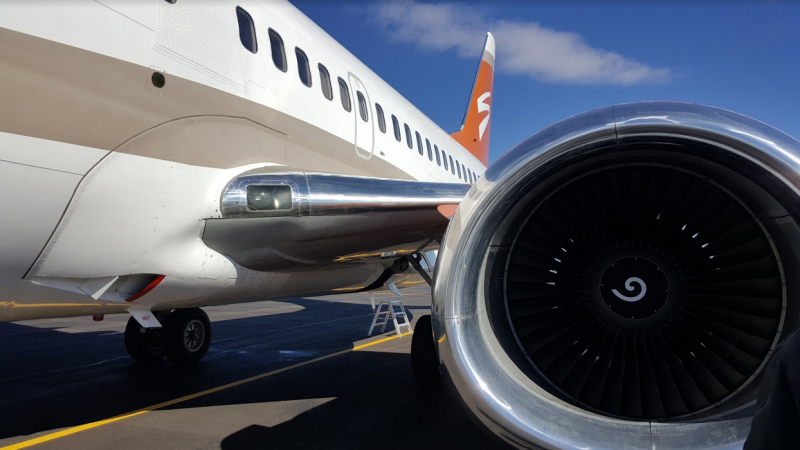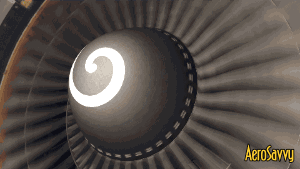Here's Why There Are White Spirals Inside Airplane Engines
The more you know.
Recently, when I was boarding my plane from Chennai, India, I happened to get a peek inside its engine impeller cone, and I noticed a spiral/swirl mark painted in the centre
It left me wondering as to why is it there for and what exactly does it do? You know, besides looking 'hypnotising'!
So I decided to do a little digging around the Internet
After looking through several aviation blogs, the two reason that popped the most were that 1) they act as a bird deterrent, 2) to identify when the engine cone is spinning.
However, the swirl's worth as a bird-strike prevention mechanism doesn't have a lot of conclusive, hard research
Why?
Because, as David Tracey of Jalopnik has noted, two of the leading makers of jet engines in the world have contradicted themselves on it.
That leave us with this: the spiral's function is straightforward. It alerts ground staff to a running engine, ensuring that no one comes too close to engine impeller
They warn the ground crew that the engine is still rotating so that the person de-icing the aeroplane or removing your luggage doesn't get too close and get sucked inside.
And if you thinking, "well, the ground crew can easily tell if an engine is still running", you would be surprised to know that it's not always that easy.
As this article on Dutch airline KLM website explains, "there could be several engines running at once near ground crew, plus they wear hearing protection. If five engines are singing in your ears, it isn’t always obvious which is running and which isn’t."
Wanna know just how dangerous it can be if someone in the ground crew gets too close to a turbofan? Watch this terrifying (a bit blurry) video:
Did you know there's actually a hazard area around engine?
As this article on AeroSavvy talks about, working near a running jet engine is extraordinarily dangerous. A Boeing 737 engine, running at idle power, has a hazard zone of 9 feet to the front and sides of the engine.
This means that, even at idle thrust, a human that walks in the hazard area runs the risk of being sucked inside and consumed by the engine. When the engine is above idle thrust, the hazard zone increases to 14 feet or more.
Engines on larger jets, like the 777 have much larger hazard zones. It is absolutely critical that ground crews can identify a running engine and stay away from it.

